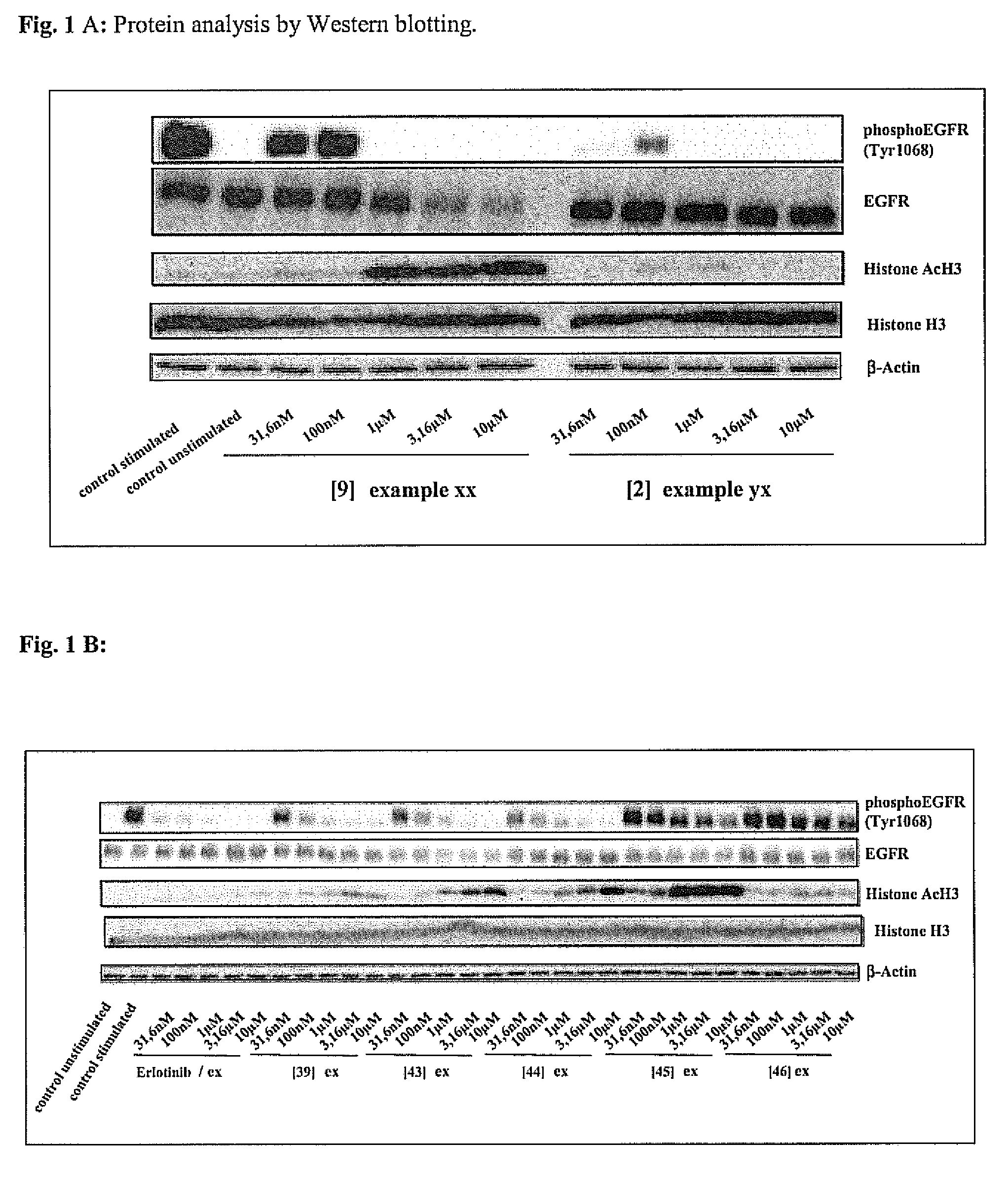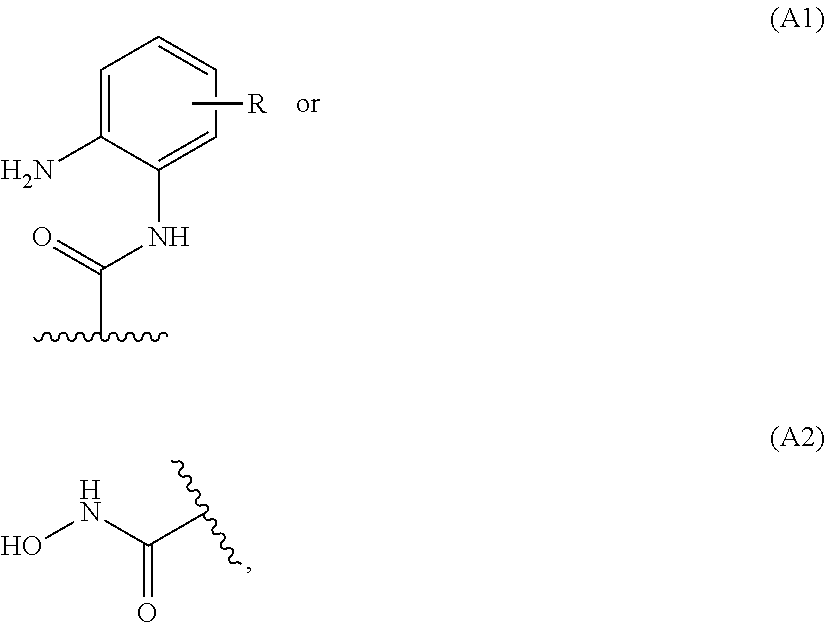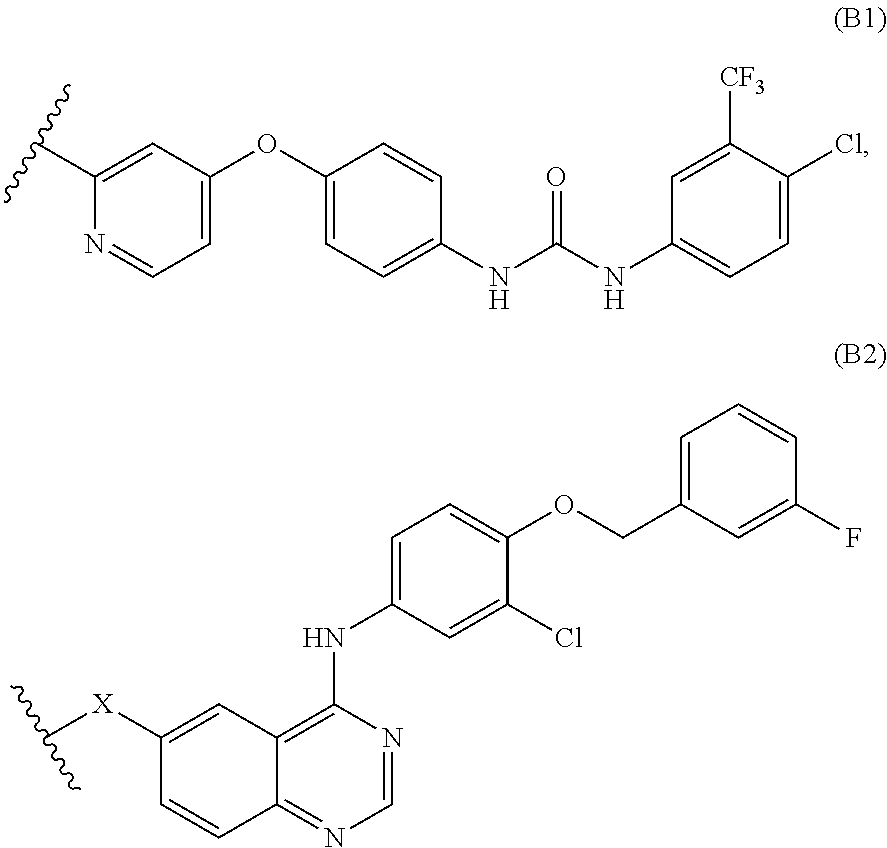Novel bifunctional compounds which inhibit protein kinases and histone deacetylases
a technology of histone deacetylase and protein kinase, which is applied in the field of new bifunctional compounds, can solve the problems of limited data published regarding the specificity of histone deacetylase inhibitors
- Summary
- Abstract
- Description
- Claims
- Application Information
AI Technical Summary
Benefits of technology
Problems solved by technology
Method used
Image
Examples
examples
[0201]The following examples serve to illustrate the present invention.
Chemical Syntheses
1. Synthesis of Sorafenib Chimera
(E)-3-(4-{4-[3-(Chloro-trifluoromethyl-phenyl)-ureido]-phenoxy}-pyridin-2-yl)-N-hydroxy-acrylamide
1-(4-Benzyloxy-phenyl)-3-(4-chloro-3-trifluoromethyl-phenyl)-urea
[0202]15 g (4-Benzyloxy-phenylamine) is diluted in 260 ml dichloromethane under argon atmosphere. The solution is cooled down to 0° C. 18.35 g Chloro-isocyanato-trifluoromethyl-benzene are dissolved in 260 ml dichloromethane and is slowly added to the solution. The solution is stirred overnight at ambient temperature. The solid is filtered and washed with dichloromethane and dried in high vacuo.
[0203]By this method 28.37 g of the title compound are obtained (Yield: 90%).
1-(4-Chloro-3-trifluoromethyl-phenyl)-3-(4-hydroxy-phenyl)-urea
[0204]26.37 g 1-(4-Benzyloxy-phenyl)-3-(4-chloro-3-trifluoromethyl-phenyl)-urea are diluted in 200 ml MeOH / THF (1:1). 2.6 g of Pd / C are added under argon atmosphere. The solu...
PUM
| Property | Measurement | Unit |
|---|---|---|
| affinity | aaaaa | aaaaa |
| stability | aaaaa | aaaaa |
| β | aaaaa | aaaaa |
Abstract
Description
Claims
Application Information
 Login to View More
Login to View More - R&D
- Intellectual Property
- Life Sciences
- Materials
- Tech Scout
- Unparalleled Data Quality
- Higher Quality Content
- 60% Fewer Hallucinations
Browse by: Latest US Patents, China's latest patents, Technical Efficacy Thesaurus, Application Domain, Technology Topic, Popular Technical Reports.
© 2025 PatSnap. All rights reserved.Legal|Privacy policy|Modern Slavery Act Transparency Statement|Sitemap|About US| Contact US: help@patsnap.com



